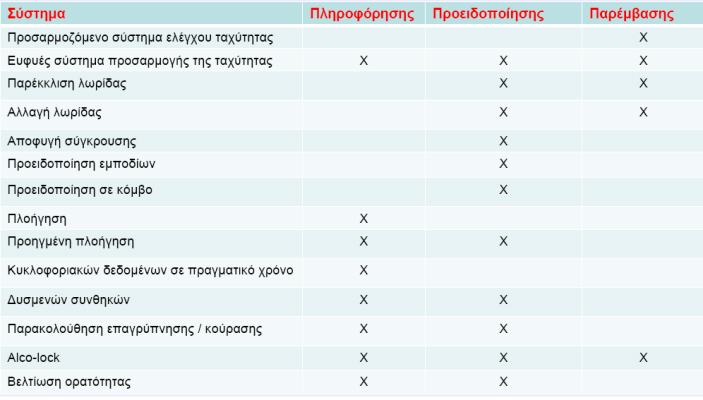
Intelligent transport systems comprise a rapidly evolving research and technological field. This study addresses intelligent transport systems that involve the driver. Several such systems now form part of even standard vehicle equipment or road infrastructure enhancing road safety, traffic conditions and driving comfort. As these systems operate mostly during the driving task they interact with the driver and hence their operation modifies driving behaviour. A substantial number of studies has been undertaken to identify system use impact on driving behaviour, and for several of these systems, and particularly for the most mature ones, this impact has been qualified and quantified. However, research on incorporating the use of ITS while also catering for the incorporation of driving behaviour modifications into traffic simulation models is scarce. This study aims at designing a methodology for the incorporation of intelligent transport systems into traffic simulation models. This incorporation does not only involve system operation, but also the resulting driver behaviour. To achieve this, an extensive discussion on traffic simulation models and intelligent transport systems impact is undertaken. First, the different intelligent transport systems are classified with respect to their operation and the features they provide; human-machine interface is also discussed. In addition, the different types of ITS impact on driving behaviour are being considered. A synthesis of the different elements and parameters of traffic simulation models and of the different types of ITS impact is attempted leading to the definition of specific steps and actions that need to be undertaken in order to model intelligent transport systems use, at an adequate level.
| ID | pc118 |
| Presentation | |
| Full Text | |
| Tags | intelligent systems, statistical modelling, traffic management |







